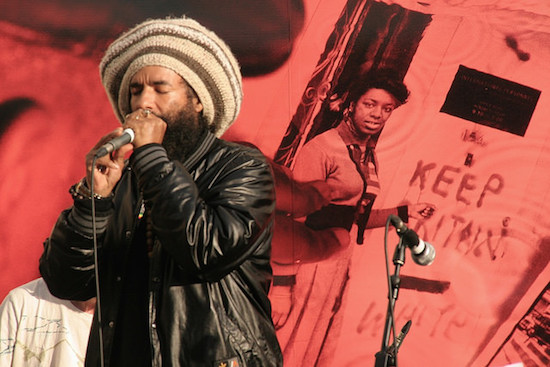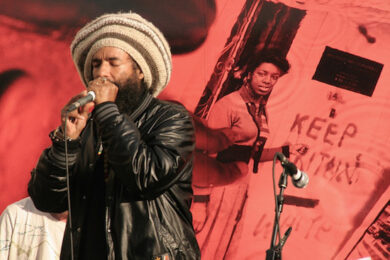— Kamau Brathwaite
On June 22nd 1948 the legendary passenger ship, the SS Empire Windrush, docked for the first time at Tilbury in Essex carrying on board 492 passengers from Britain’s post-colonial Jamaica. Beckoned from abroad in the wake of World War II, to rebuild destroyed cities and to supplement a diminished workforce, the newly arrived found refuge in the vacant bomb shelters surrounding Clapham Common and signed on at the Brixton labour exchange on Coldharbour Lane. Many settled in the area, were housed by the government in south London and began the arduous journey building a new life. The Windrush docked for the last time in 1954, the interim journeys it made becoming the stuff of myth, solidified in sepia photographs, at the threshold of leaving behind one identity and beginning another.
On July 24th 2014, on a hollowed day of celebration in Brixton’s town centre, the doors of the Black Cultural Archives (BCA) were thrown open for the first time to the public. Within its walls lies a documentary of the intervening sixty-seven years and charts the development of a dual identity as first generation became second. Opened by Brixton town centre manager and director of the archives, Paul Reid, British born to Caribbean parents, he recounted stories of school time with mixed race heritage. A question asked innocently during a history lesson ‘Sir, were there people in America before Christopher Columbus?’ was viewed as subversion and treated as such. His hope for the archives was that it could answer these questions with all the complexities of the transnational identities that are housed therein, evolved from phenomena of the Diaspora.
The origin of the term diaspora is found in the Greek word, dia — to sow. Used most frequently in the 20th century to describe a catastrophic exile, the sprinkinly across the globe of abandoned people, the Armenian genocide, the Holocaust, leading to the creation of discreet international hubs of migrants instating brought traditions and customs. In the case of the newly-established south Londoners, however, a sense of England as the ultimate homeland, of new arrivals knowing more about England than Jamaica in some instances, their hostile reception came something of a shock.
Post-colonial migration, off the back of more relaxed terms of travel to formerly-allied countries did not negate the impact of spontaneous and unplanned arrivals absorbed by communities least equipped to absorb them. None-the-less this kind of emigration was viewed differently to the US model where a system of aggressive assimilation, stars and stripes in every classroom, pledging allegiance to the flag, and Brixton flourished to become an enclave of Caribbean culture and political activities. The West Indian Gazette, The Organization of Women of Asian Descent, the Afro-Caribbean Educational Resource Project, Brixton’s Black Women’s Group amongst others quickly emerged.
‘Where are our monuments’, they said.
By 1981 relations in Brixton had reached a critical point. Stark figures encapsulate the economic and social atmosphere; 21,000 members of the police force, 39 of them black. Three million unemployed. The invocation of the SUS law which saw 1,000 stopped and searched in Brixton over a three day period alone, led in no small part to the rioting that engulfed England 1981 – Brixton, Toxeth and Handsworth. In images etched into the cultural landscape of Brixton, south London succumbed to three days of chaos and violence in which 300 people were injured and entire streets destroyed.
And so the Black Cultural Archives was established in the wake of the riots, initiated by historian and photographer Len Garrison and Ansel Wong, the founder of Black History Week. By 1983 the group had applied for charity status with the aim of establishing a team of a librarian, a researcher, a photographer and based itself loosely on the ideals of the Schomburg Research Centre for Black Culture in Harlem as an amassed if inchoate historical narrative. With humble beginnings out of the bookshop on Coldharbour Lane, members of the community would drop off bags of notes and photographs, minutes of meetings, rent books, newspaper clippings, vinyl, cassettes of story-telling, cassettes of Calypso music, food wrappers, letters, stamps. Memorabilia, memories. Over the course of three decades the BCA had moved several times, taking with it acres of material packed away in boxes. Its penultimate incarnation was in Othello Close, a council estate in Kennington where it was visited not only by academics, school children and students but often by members of the community who wished to sit and listen and read – to excavate the history of their neighbourhood.
In 1982 the Jamaican dub-poet Mikey Smith made his first and only tour of the UK. Dub poetry, with reggae and punk had grown in popularity in the 70s and 80s enabling otherwise obscure artists like Smith to perform to large and often adoring audiences in London. Filmed by Anthony Wall for the BBC, Smith’s inaugural tour eventually became the documentary ‘Upon Westminster Bridge’ shown at the Black Cultural Archives on July 4th. The film formed the centrepiece to an evening of ranting poetry hosted by the poet Tim Wells. Wells, a prolific poet who established the poetry zine ‘Rising’ in 1993 is somewhat a devotee of the Jamaican poet. In the upstairs room of the archives, habitual host now to screenings and discussions about what the archives mean to present and future generations, ‘Upon Westminster Bridge’ was introduced against the bustling backdrop of a Brixton in the midst of a heatwave. A counterpoint, an ode to an altogether grittier Brixton shows Smith wandering through the markets on Electric Avenue and Atlantic Road. He leans against shop fronts and serenades passing women. He pontificates, twinkle-eyed on the state of Jamaican culture shot through the haze of 1980s melancholy. Flitting between Jamaica and Britain the film presents the entanglement, the disavowal and finally a recognition of the intensely complicated figures that emerge in the wake of independence. The euphoria of being free is unhinged by the realities of poverty and claustrophobia, of idleness and ideal-lessness.
Hall will attest later in the evening as to Smith’s mesmeric presence along with his rhythmic wizardry, the Kingston drawl alongside humming bass, embracing a Jamaican identity in the English language. Murdered at the age of 27 in the wake of a hard right Labour rally in Kingston, Smith left a behind a devastating well of unfulfilled potential. He began writing poetry while in hospital at 14 with a broke leg that left him with the limp that always seemed at odds with his young age. Upon his death he had only released one record and one anthology of poetry but his enduring appeal bares an unquestionable influence on the poets performing in Brixton that night. Tim Wells, Hannah Lowe and the younger Kayo Chingonyi, each had their own memory of Smith to share, each a cataclysmic moment of hearing the hypnotic storyteller for the first time.
Long after the evening ended, the sun set on the blink-and-you’ll-miss-it wave of change in Brixton, the residual image of the evening was of the poet and folklorist Louise Bennett gazing out of the screen in an early recording of her in Kingston performing in Jamaican patois. Responsible for a resurgence in interest in the use of dialect in Jamaican cultural output she remains an influence to continuing generations of national and international poets. And she seemed at home at the Black Cultural Archives. John Akomfrah of the Black Audio Film Collective has described the archive as a site of intervention; the BCA intervenes with a re-imaging of black cultural heritage. Paul Reid has noted that the power of heritage can transform lives by readdressing hegemonic, historic, partisan narratives. An evening of ranting poetry was the perfect encounter with Black Cultural Archives. At once an excavation and an exorcism in an iconic building, on an iconic square, in an iconic borough once again heralding great swathes of migrating change.
The Black Cultural Archives in Brixton are open now



